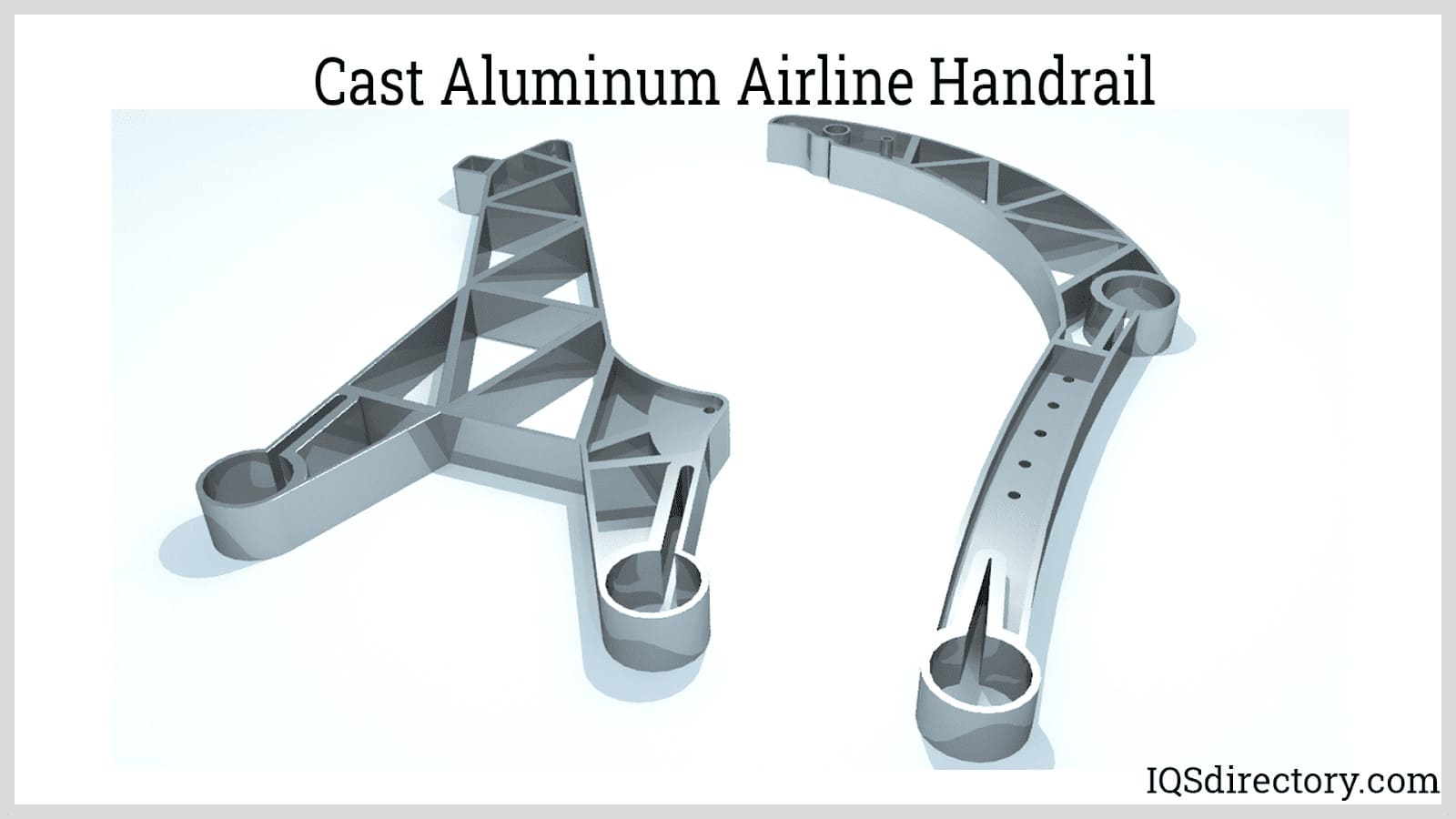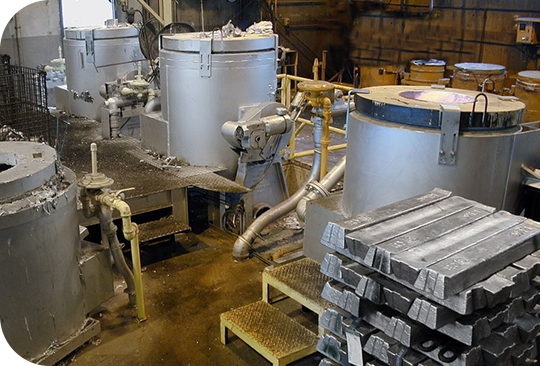A comprehensive overview to Aluminum Castings techniques and processes
Innovations and Trends Forming the Future of Aluminum Casting in Engineering Solutions
Innovations in aluminum casting are changing design remedies. Breakthroughs in casting methods, especially high-pressure die casting and investment casting, are enhancing precision and design flexibility. Automation and smart technologies play a vital function in optimizing production efficiency. Sustainability is coming to be a top priority, with environment-friendly materials acquiring traction. As these trends progress, they will redefine sector requirements and consumer expectations. What implications might these adjustments hold for the future of manufacturing?
Advances in Casting Strategies

The Function of Automation in Aluminum Casting
Automation plays a pivotal role in enhancing the aluminum casting procedure by substantially boosting production efficiency. By incorporating innovative innovations, makers can enhance operations and minimize cycle times (Aluminum Castings). Furthermore, automation adds to boosted quality assurance, making certain constant item requirements and reducing issues
Raised Production Efficiency
Changing the aluminum casting market, automation significantly boosts production efficiency. Automated systems streamline various phases of the casting process, decreasing manual labor and minimizing human error. High-speed robot arms can exactly deal with molds, making certain constant and fast production cycles. In addition, advanced computer formulas optimize the organizing and administration of resources, causing minimized downtime and enhanced operations. Automation additionally permits real-time tracking and modifications, enabling producers to respond swiftly to any kind of functional problems. By carrying out automated processes, firms can raise output while maintaining cost-effectiveness. Eventually, this shift towards automation not only improves performance yet also settings suppliers to fulfill the growing demands of the market with better agility and sustainability.
Enhanced Quality Assurance
A significant advancement in aluminum casting is the assimilation of automatic high quality control systems, which boost product consistency and minimize defects. These systems utilize advanced sensors and data analytics to keep track of the casting process in real-time, permitting immediate changes based on top quality metrics. Automation minimizes human mistake and enhances the integrity of examinations, ensuring that each part fulfills rigid specs. By executing device knowing formulas, suppliers can anticipate possible failures and proactively address issues before they rise. This not only enhances the overall high quality of aluminum items yet also streamlines the manufacturing procedure, resulting in increased effectiveness and price financial savings. Eventually, boosted quality control through automation represents a transformative action in the aluminum casting sector.
Smart Technologies and Industry 4.0 Combination
The integration of clever modern technologies and Sector 4.0 in aluminum casting is transforming production procedures. With the Internet of Points (IoT) improving real-time monitoring, automation and robotics are streamlining procedures, while information analytics supply critical insights for optimization. These improvements are establishing brand-new requirements for efficiency and precision in the market.
IoT in Casting Procedures
How can the integration of IoT innovations boost the effectiveness and accuracy of aluminum casting processes? The application of IoT in casting allows real-time surveillance of temperature, stress, and various other crucial parameters, guaranteeing ideal conditions throughout production. Sensors connected to the cloud can collect and assess information, assisting in predictive maintenance and lowering downtime. By using intelligent algorithms, producers can identify anomalies that could result in flaws, thus improving high quality control. Furthermore, IoT technologies allow smooth interaction between devices, enabling for collaborated operations and source optimization. This interconnectedness not just improves workflows but also boosts decision-making capacities, inevitably bring about substantial price financial savings and greater efficiency in aluminum casting procedures.
Automation and Robotics Advancements
While the combination of automation and robotics is transforming the aluminum casting market, developments in smart technologies and Sector 4.0 are driving unprecedented performance and accuracy. Automated systems now deal with repetitive tasks, reducing human mistake and raising manufacturing rates. Robotics in casting processes enables improved handling of complex forms and fragile elements, guaranteeing consistent quality. In addition, the usage of collective robots, or cobots, enhances employee security by taking over hazardous procedures. Smart modern technologies assist in real-time surveillance and changes, enhancing production lines without manual treatment. As helpful hints these developments evolve, they develop a much more nimble and receptive manufacturing environment, making it possible for business to adjust quickly to market demands and boost general competition in the aluminum casting market.
Data Analytics for Optimization
As automation and robotics remain to reshape the aluminum casting sector, the consolidation of information analytics emerges as a vital part of Smart Technologies and Market 4.0. By leveraging large datasets produced throughout the production process, manufacturers can determine inefficiencies, enhance workflows, and improve product high quality. Advanced formulas and device learning tools make it possible for predictive upkeep, minimizing downtime and minimizing operational expenses. In addition, real-time data evaluation sustains notified decision-making, permitting active responses to market needs. The assimilation of information analytics not just streamlines manufacturing procedures but likewise cultivates innovation in product advancement. As the sector evolves, accepting data-driven methods will certainly be important for business intending to keep affordable advantages and accomplish lasting growth in the aluminum casting sector.
Additive Manufacturing in Aluminum Solutions

Additive production increases the prototyping process, allowing quick iteration and design optimization. It assists in the modification of components, satisfying specific client requirements without the restrictions of standard casting approaches. The assimilation of advanced software Discover More tools aids in mimicing and fine-tuning styles before production, making sure performance and accuracy. As the aluminum casting landscape progresses, additive production attracts attention as a transformative pressure, cultivating technology and opening up brand-new methods for design options throughout numerous markets.
Sustainable Practices and Recycling Initiatives
Sustainable practices and reusing campaigns are coming to be significantly crucial in the aluminum casting sector, provided the growing emphasis on environmental duty. Suppliers are embracing techniques that reduce waste and energy consumption, therefore lowering their carbon impact. One famous trend is the use of recycled aluminum, which requires significantly less energy to procedure compared to primary aluminum manufacturing. This shift not just preserves all-natural sources however likewise decreases greenhouse gas discharges.
Additionally, innovative casting methods, such as die-casting and sand casting, are being enhanced for sustainability, enhancing material performance. Firms are additionally purchasing closed-loop systems that facilitate the reprocessing of scrap metal generated throughout manufacturing. In addition, cooperations with recycling companies are cultivating a more effective reusing infrastructure, ensuring that aluminum items have a longer lifecycle. Jointly, these campaigns emphasize the sector's dedication to sustainability while meeting the growing need for eco liable options in engineering applications.
Lightweight Products for Boosted Efficiency
The aluminum casting industry is not only concentrating on sustainability yet also on the growth of light-weight materials that enhance performance across numerous applications. These products are progressively crucial in markets such as vehicle, aerospace, and customer electronic devices, where reducing weight can lead to boosted fuel performance and total efficiency. Advanced aluminum alloys and compounds are being engineered to achieve remarkable strength-to-weight ratios, making it possible for makers to create parts that are both robust and light-weight.
Technologies in casting strategies, such as high-pressure die casting and financial investment casting, promote the manufacturing of intricate layouts while decreasing material waste. This shift towards lightweight products is not just transforming product styles but likewise driving competitive benefits in performance and effectiveness. As markets remain to focus on weight reduction, the need for innovative aluminum casting services will likely expand, placing light-weight products as a cornerstone of future engineering innovations.
Satisfying the Demands of Eco-Conscious Consumers
As consumers significantly focus on eco-friendliness in their getting choices, the aluminum casting industry is adjusting to satisfy these advancing needs. Suppliers are currently concentrating on sustainable techniques, such as using recycled aluminum, which considerably decreases power consumption and greenhouse gas discharges contrasted to key aluminum manufacturing. Aluminum Castings. This shift not just saves natural resources but also charms to eco aware consumers
Additionally, cutting-edge casting methods are being established to minimize waste and enhance power efficiency throughout manufacturing. Business are also exploring biodegradable finishes and environment-friendly ingredients to even more lower their ecological impact.
Moreover, transparency in supply chains is becoming essential, with brands providing info about their sourcing and producing processes. By lining up with the values of eco-conscious customers, the aluminum casting market is placing itself for a sustainable future, demonstrating that environmental obligation can exist together with premium design solutions.
Regularly Asked Inquiries
What Industries Largely Use Aluminum Casting Solutions?
Light weight aluminum casting options are mostly made use of in auto, aerospace, and customer goods industries. These sectors gain from aluminum's light-weight residential or commercial properties, corrosion resistance, and convenience, making it an excellent option for numerous applications and parts.
Just How Does Aluminum Casting Contrast to Various Other Steel Casting Approaches?
Light weight aluminum casting offers lightweight buildings, exceptional deterioration resistance, and excellent thermal conductivity compared to other metal casting approaches. Aluminum Castings. Its adaptability and efficiency make it a preferred option in numerous applications, especially in vehicle and aerospace markets
What Qualifications Are Very Important for Aluminum Casting Manufacturers?

What Are Common Defects in Aluminum Casting and Their Reasons?
Common problems in aluminum casting consist of porosity, shrinking, and surface area flaws. These issues frequently emerge from incorrect putting strategies, insufficient temperature control, and contamination, influencing the structural integrity useful site and aesthetic top quality of the end product.
How Can I Select the Right Aluminum Alloy for My Job?
Selecting the appropriate aluminum alloy involves considering factors such as mechanical residential or commercial properties, corrosion resistance, thermal conductivity, and application demands. Examining these standards helps assure peak performance and longevity for the details project in inquiry.